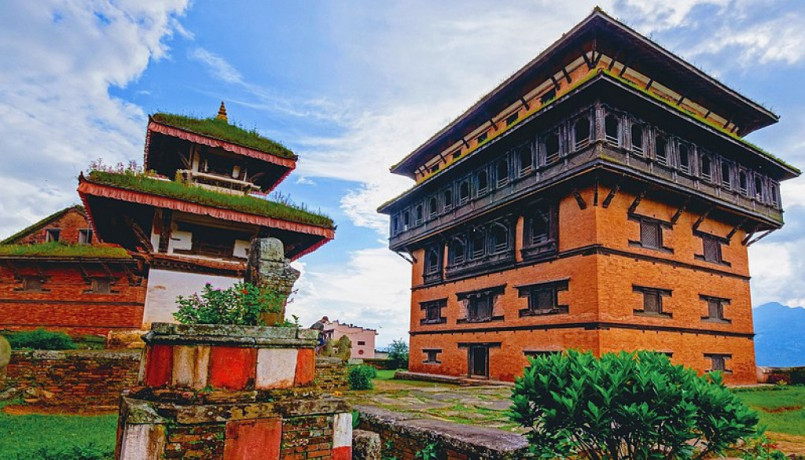Nuwakot Durbar: A Majestic Heritage of Nepal Professional
Jul 9th, 2024 at 15:33 Blogs Nuwakot, Nepal 506 views Reference: 1394Location: Nuwakot, Nepal
Price: Contact us
Nuwakot Durbar: A Majestic Heritage of Nepal
Nuwakot Durbar, also known as Nuwakot Palace, is a historic and architectural gem located in the Nuwakot District of Bagmati Province, Nepal. Situated approximately 75 kilometers northwest of Kathmandu, this majestic palace complex holds immense historical significance and offers a glimpse into Nepal's rich cultural and architectural heritage.
Historical Background
Nuwakot Durbar was built in the 18th century during the reign of King Prithvi Narayan Shah, the founder of modern Nepal. The palace played a crucial role in the unification of Nepal. King Prithvi Narayan Shah used Nuwakot as a strategic military base during his campaign to unify the smaller kingdoms into a single nation.
The palace complex, completed in 1762, served as a royal residence and administrative center. Nuwakot's strategic location on a hilltop provided a vantage point for monitoring the surrounding areas, making it a vital military stronghold during the unification process.
Architectural Significance
Nuwakot Durbar is an outstanding example of traditional Nepalese architecture, blending Newari and Malla architectural styles. The palace complex consists of several buildings, temples, and courtyards, each showcasing exquisite woodwork, intricate carvings, and traditional craftsmanship.
1. The Seven-Storey Palace (Saat Tale Durbar)
The centerpiece of the Nuwakot Durbar complex is the seven-storey palace, known as Saat Tale Durbar. This towering structure is a marvel of traditional architecture, featuring beautifully carved wooden windows, doors, and struts. Each floor of the palace has unique architectural elements and historical artifacts, offering a journey through Nepal's history and cultural heritage.
2. Bhairab Temple
Adjacent to the main palace is the Bhairab Temple, dedicated to the fierce form of Lord Shiva. The temple is an excellent example of Newari craftsmanship, with intricate wood and metal work adorning its façade. The temple holds religious significance and is a focal point of local festivals and rituals.
3. Rani Mahal (Queen’s Palace)
The Rani Mahal, or Queen’s Palace, is another notable structure within the Nuwakot Durbar complex. This two-storey building served as the residence for the queen and other royal family members. The palace is adorned with delicate carvings and traditional Newari architecture, reflecting the grandeur of the royal era.
Cultural and Historical Significance
Nuwakot Durbar is not just an architectural marvel but also a symbol of Nepal's unification and historical resilience. The palace complex stands as a testament to King Prithvi Narayan Shah's vision and determination to create a unified Nepal. It offers insights into the military strategies, administrative practices, and royal lifestyle of the 18th century.
The annual festivals and cultural events held at Nuwakot Durbar, such as the Dashain and Bhairab Jatra, attract visitors from across the region. These festivals showcase traditional music, dance, and rituals, providing a vibrant display of local culture and heritage.
Tourist Attractions
Nuwakot Durbar and its surroundings offer a range of attractions for visitors:
1. Panoramic Views
Perched on a hilltop, Nuwakot Durbar offers breathtaking panoramic views of the Trishuli River Valley and the surrounding hills. The scenic beauty of the landscape, combined with the historic charm of the palace, makes it a perfect destination for nature lovers and history enthusiasts alike.
2. Hiking and Nature Walks
The area around Nuwakot Durbar is ideal for hiking and nature walks. Visitors can explore the lush greenery, terraced fields, and traditional villages, experiencing the rural charm of Nepal. The trails offer opportunities to observe local flora and fauna and enjoy the tranquil environment.
3. Trishuli River
The nearby Trishuli River is popular for white-water rafting and fishing. Adventure enthusiasts can enjoy rafting trips on the river, which offer a mix of exciting rapids and calm stretches, providing a thrilling experience amidst stunning natural scenery.
Preservation and Restoration
Efforts have been made to preserve and restore Nuwakot Durbar, especially after the 2015 earthquake, which caused significant damage to many historical structures in Nepal. Various government and non-government organizations have collaborated to restore the palace complex to its former glory, ensuring that future generations can appreciate and learn from this historical treasure.
Conclusion
Nuwakot Durbar is a majestic heritage site that embodies the historical, cultural, and architectural richness of Nepal. Its strategic importance during the unification of Nepal, coupled with its stunning traditional architecture, makes it a must-visit destination for anyone interested in Nepalese history and culture. As preservation efforts continue, Nuwakot Durbar stands as a proud reminder of Nepal's glorious past and enduring heritage.


